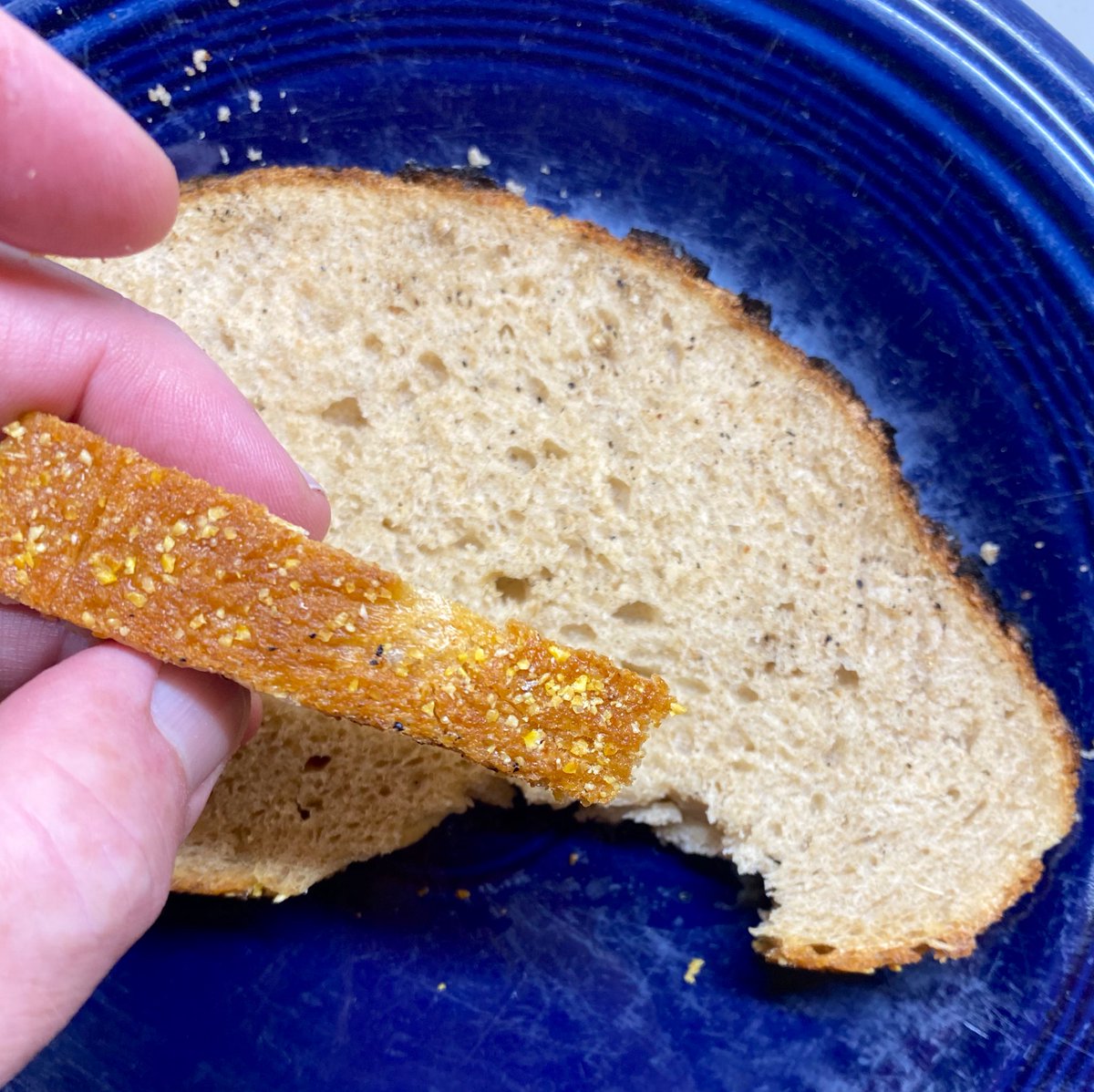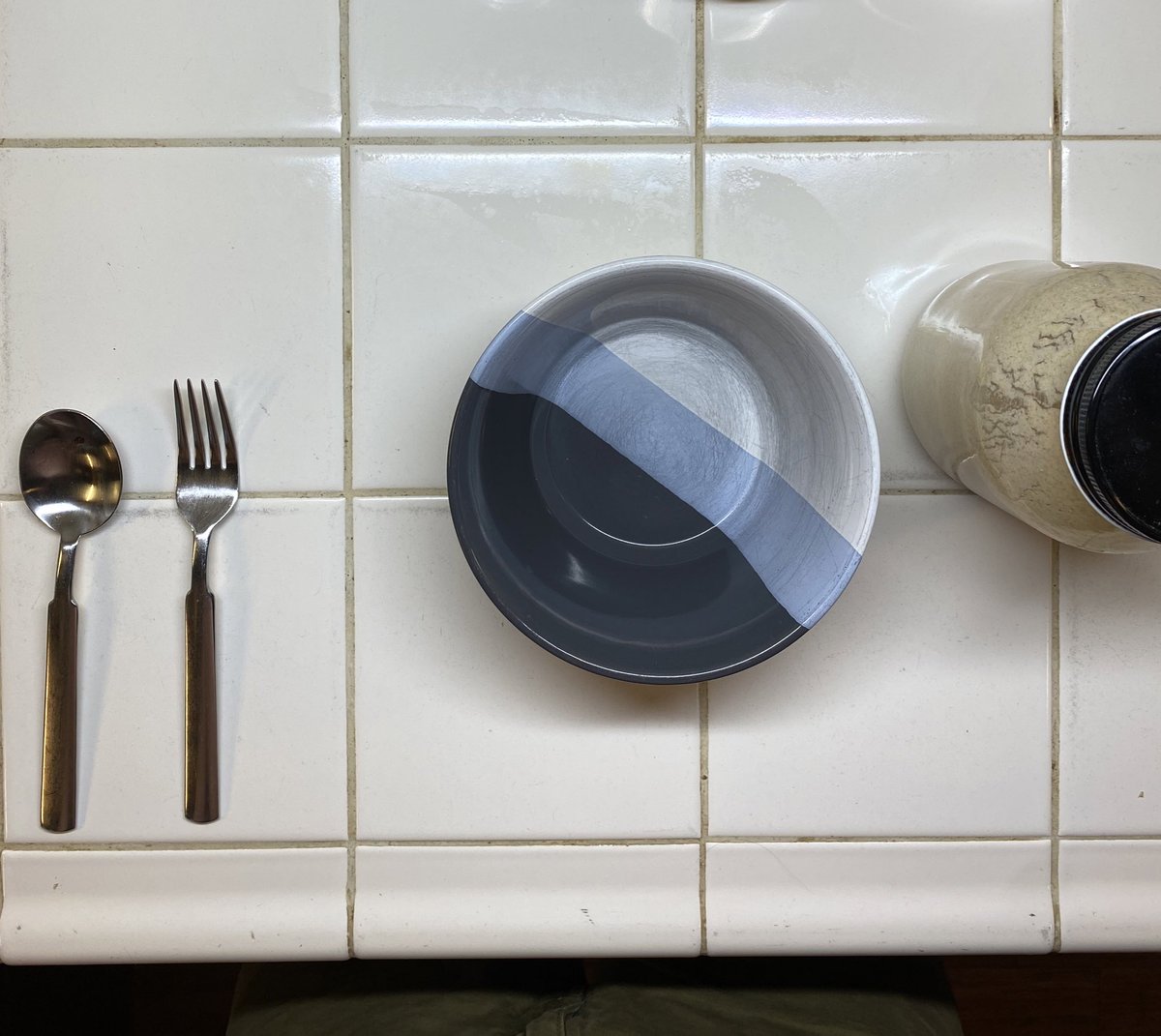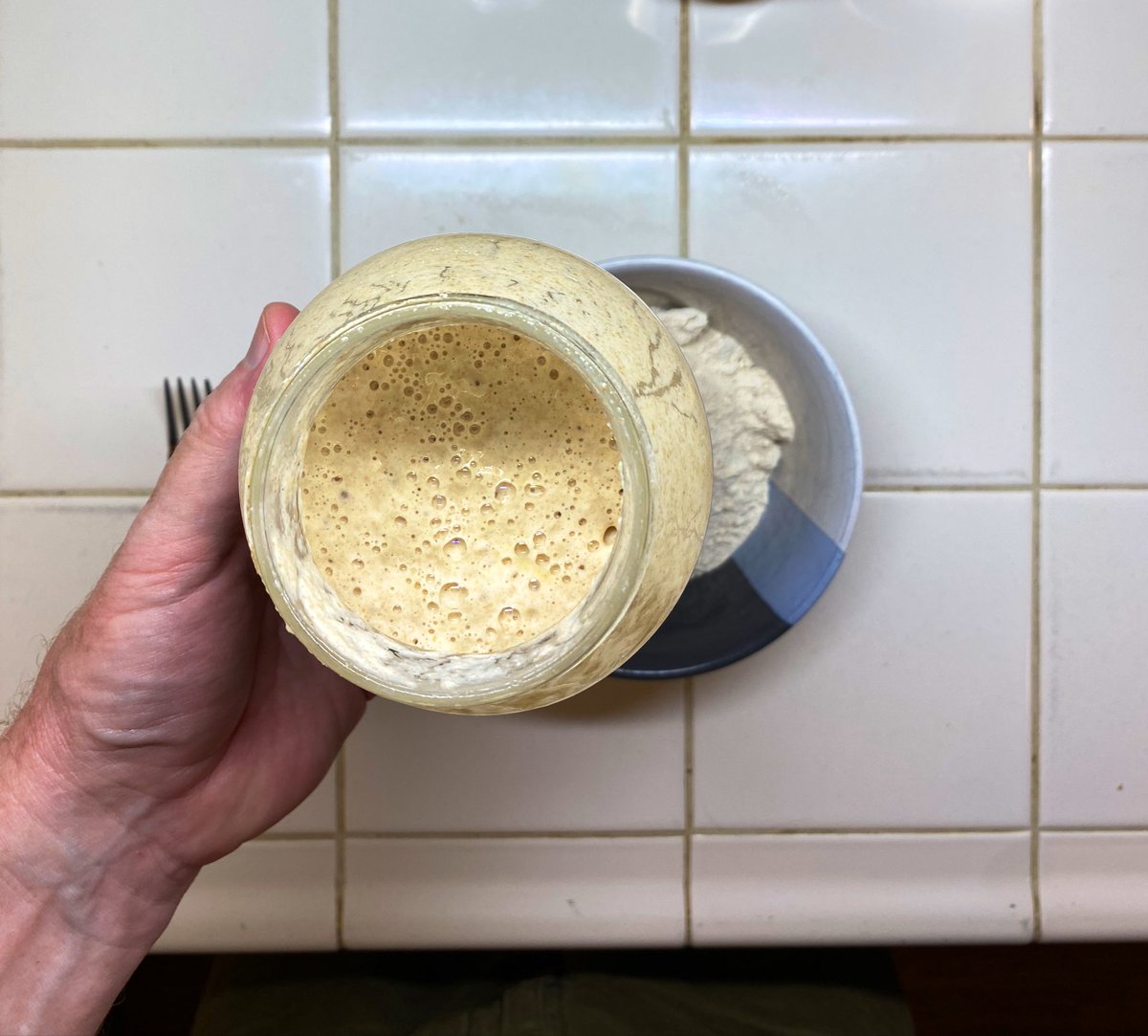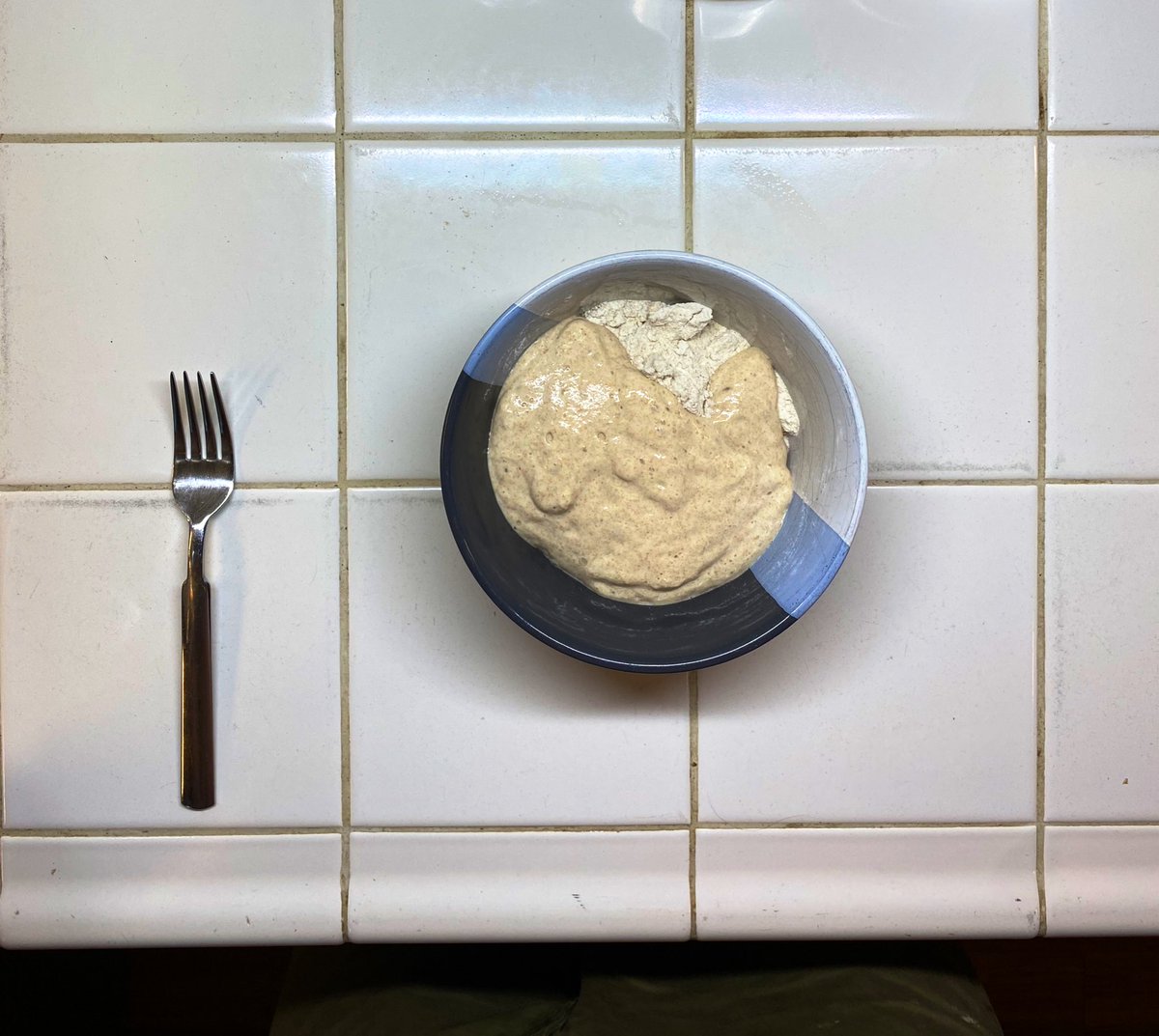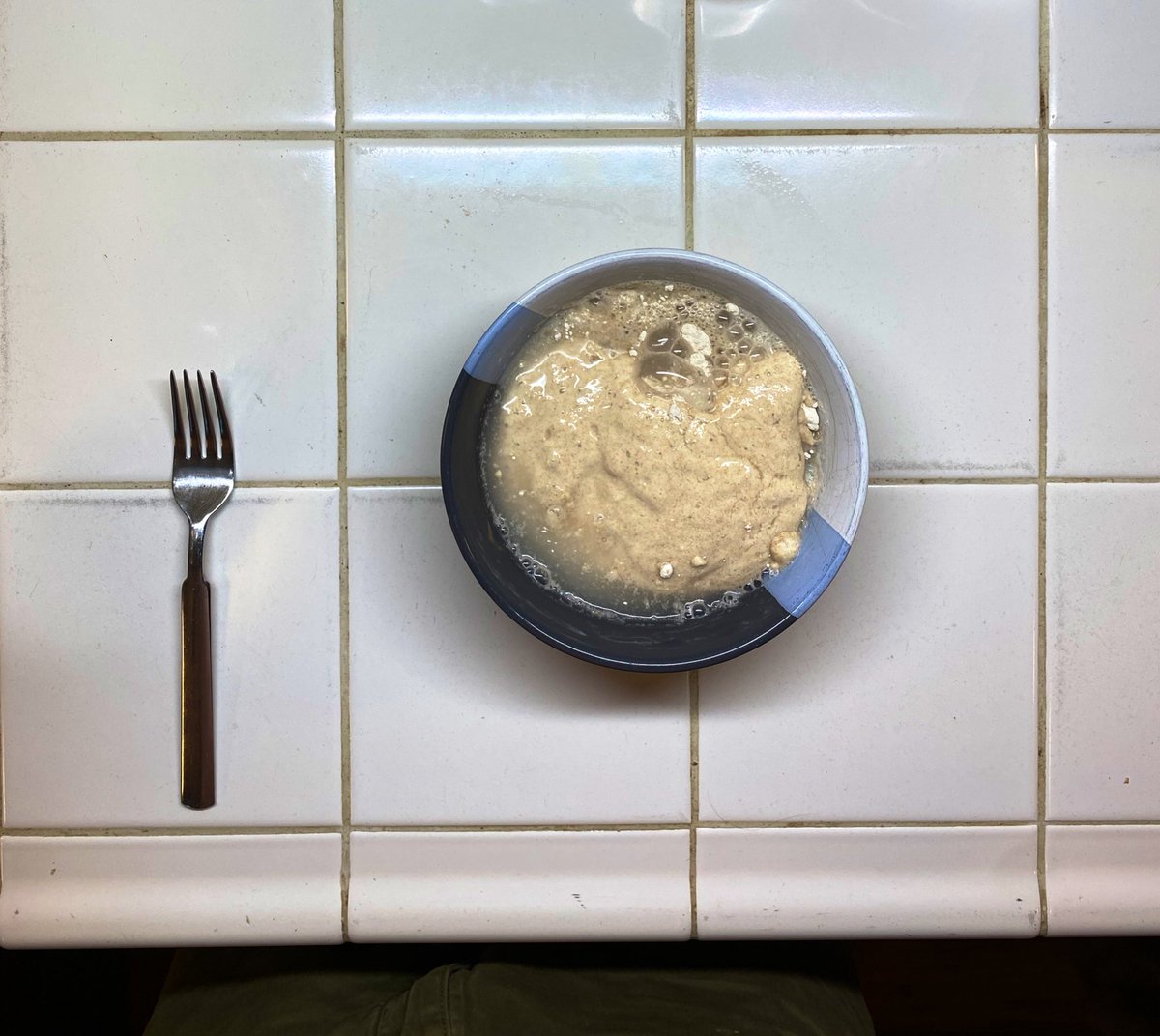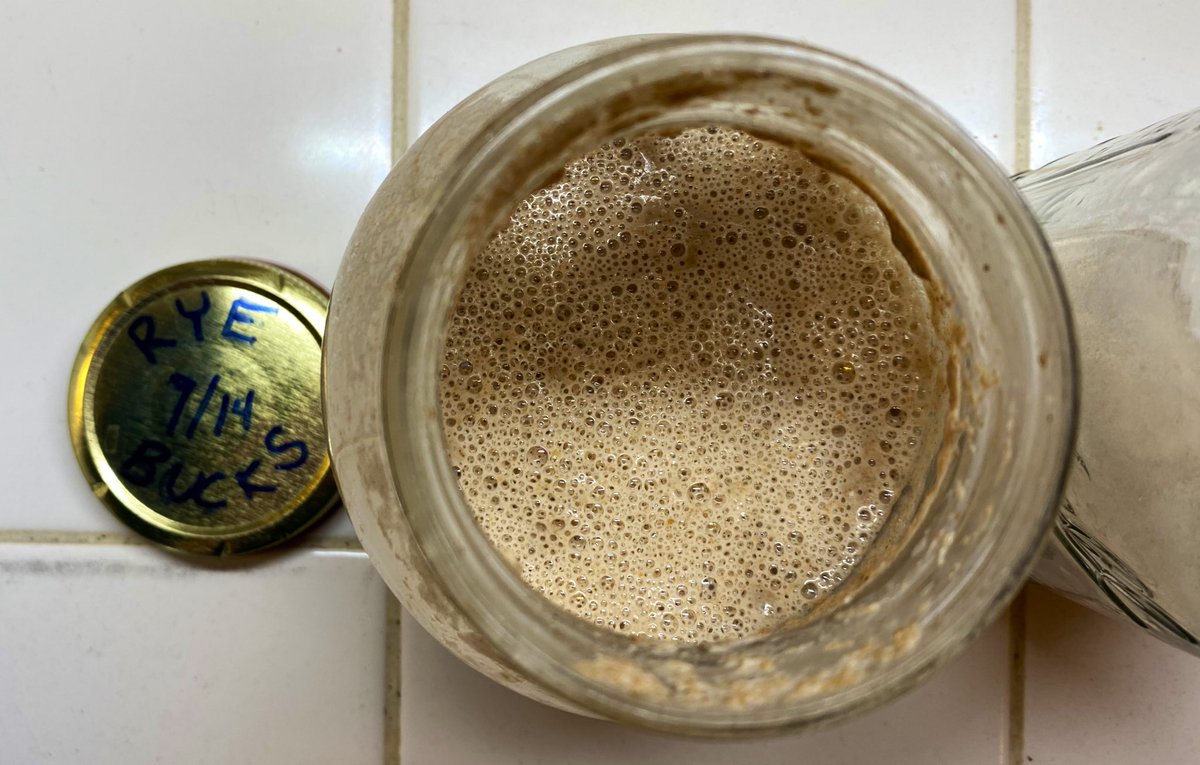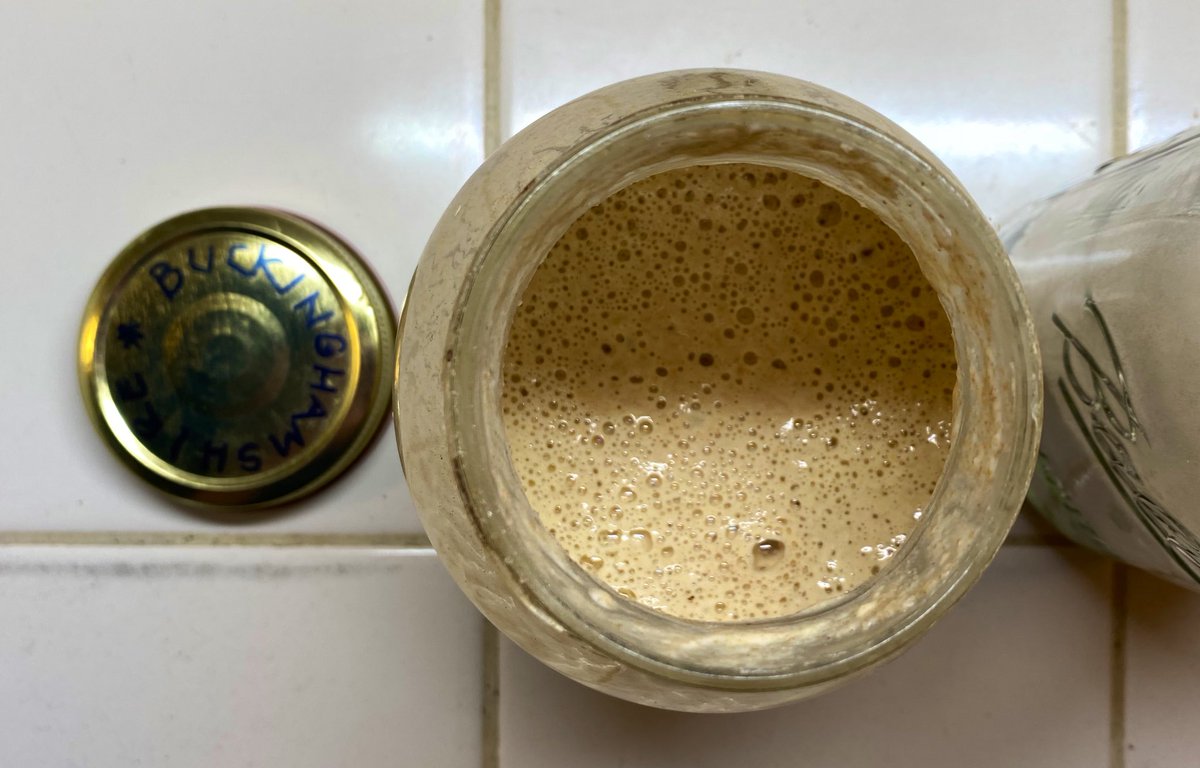
Ancient Baking this Weekend. Let’s start by comparing modern and old grains. On the right, modern engineered hard red spring wheat. On the left, heirloom Emmer, which in Old Kingdom ancient Egypt was the main bread grain- “bedjet.” 

It’s even easier to see the difference in the bags. Humans have done a thousand-odd years of genetic engineering to wheat cultivars. My Old Kingdom baking buddies mastered what was basically a wild grass. I’d estimate they were 100-300% smarter than me. 

I don’t want to get you all excited for baking today- this takes a while. Today, I have removed a sample of our research yeast from the fridge and am feeding it sterilized bedjet flour now, so we have an active culture for baking tomorrow. 

Today is about getting some grain milled and preparing the baking vessels, called “bdja” that were used to bake the bread that fed the pyramid builders. Here’s a little baby bdja.
We work with local artisanal potters on a project to replicate the high-inclusion, low fired silt pottery used in the old kingdom for these vessels. And stamped into them is the word bedja, for fun. 



OK rise and shine so the bread can... rise and, well anyway early in the morning one makes a LEVAIN which is a fancy way to say feeding a bunch of flour to some of your culture to get it amplified for baking. Amplified is a fancy way to say bubbling and yeasty AF. 

This seems easy but when you go to do it, questions arise which basically all boil down to “how goopy?” So here. This goopy. Exactly this goopy.
When you have achieved proper and appropriate goopiness, cover with something non-un-recyclable and then, with great precision and skill, let it sit. Somewhere warm is nice. If you’re me you read papers about average daytime temperatures in the Nile valley ca. 2500BCE... so yeah.
Here is an example of the type of unfiltered, thrill ride, off-tha-hook crazy adrenaline rush madness that is baking with wild and ancient microbial cultures. You can easily see why it’s taken off as a hobby recently.
The intense action continues, unabated.
Despite the rigorous attention required as the levain...sits on the counter...I am able through my superior intellect to simultaneously flip the grain mill switch to “on.” (This mill has been modified to approximate the particle size profile of the stone quorns used in antiquity)
This is the milled flour. Note all the bran and fibrous material from the Emmer grain. Making good, soft bread from this flour is QUITE challenging. Modern “whole wheat” flours usually have some of this removed so the bread rises more easily. Bakers in antiquity had SKILLS.
Bedet = Emmer
One mistake a lot of wild yeast bakers make is to jump the gun on making the dough before the culture is sufficiently bangin’ (technical jargon). This culture is now sufficiently bangin’ for us to make dough. 

Mass spectrograms of Old Kingdom objects reveals that coriander was a ubiquitous bread seasoning, so we roast a bit here for this dough. The smell is <chef’s kiss>. 



500g water, some flax oil (available in OK), the coriander, and 1kg of bedet flour. If your culture doesn’t float like this then you went too early, and there’s no shame in it, it happens to everyone sometimes and I still love you. 







The color and aroma of this dough are really special. It gets kneaded a bit until it’s “shaggy” but sticks together. Then it get popped in an earthenware vessel to rest. 





It gets covered and will rest for 45 minutes or so. The water will be distributed via osmotic processes and carry the microorganisms with it. They will feast and replicate. Next up, we murder 1/3 of them by adding poison.
This is 20g of salt. Humans love it. It’s also a preservative, which means microorganisms hate it. It’s poison. Next up we will add this poison to the dough. Shhhh don’t tell the microorganisms. 

We add the salt by making dimples and filling them with half, rolling it up, making more dimples, and adding the rest. We then roll that up, and knead until we are sweating. Expressing gluten in these old grains takes WORK. When you feel the dough stiffen, return to the bowl. 







After 30 minutes, the dough is rising and you can see salt blooms where the grains were. We do a quick stretch and fold. The gluten is developing and the microbes are helping. Now it rests another 30. 



One thing that I should mention is that the apparent hydration, ie the stickiness, of the dough will seem to vary a lot over these steps. Don’t panic. Stay the course. After the third stretch I’ll show you where you want to be in terms of elasticity/feel. This is the hard part. 

<INTERMISSION>
We are on the final stretch and fold. You can see that the gluten is developed, but unlike modern flours and wheats it will begin to break due to the high fiber and low protein content. But this will make great bread. Shoot for this. It’s not easy. Sorry. Life is hard. Get tough.
We are ready for the final proofing which will occur in the bedja pot. We stretch and fold once more to get the gas out, and flour the smaller dough ball liberally to help it not to stick. Into the oiled and seasoned bedja it goes! 







At this point it’s time to start the fire. The Old Kingdom Egyptians used Acacia wood for this and we do too- hard to find but worth it. The coals, when at about 300C will go into a pit, into which the bedja, with the dough inside, will be lowered. 



(Today I don’t have time to do it outside so I’m going to just stuff the bedja into the oven. Sorry! I suck)
By the way, instead of wasting your time here, why not read Dana Mackenzie’s amazing “Universe in Zero Words?” 

Success! A nice fluffy great-smelling Emmer and coriander loaf, which was a bunch of grass seeds just this morning. I’ve included a bit of art depicting these conical loaves in the Old Kingdom. Thanks for watching. I’ll be posing more technical how-to info as COVID eases. 



I also made two conventional loaves. The idea that you can make this from crushed grass seed and some salt and water is amazing, and also had a lot to do with the dawn of civilization. I’m happy to be able to experience a little bit of it! 



Also FYI you can cause my teenage sons to ship you a nerdshirt (“Baker of Bread”) using this website: klogw.bigcartel.com 

Finally here’s why all this stuff:
https://twitter.com/seamusblackley/status/1158264819503419392
And before bed the ubiquitous “crumb shot.” One of the coolest things about OK “bdj3” loaves is that all the slices are conic sections. 

• • •
Missing some Tweet in this thread? You can try to
force a refresh




